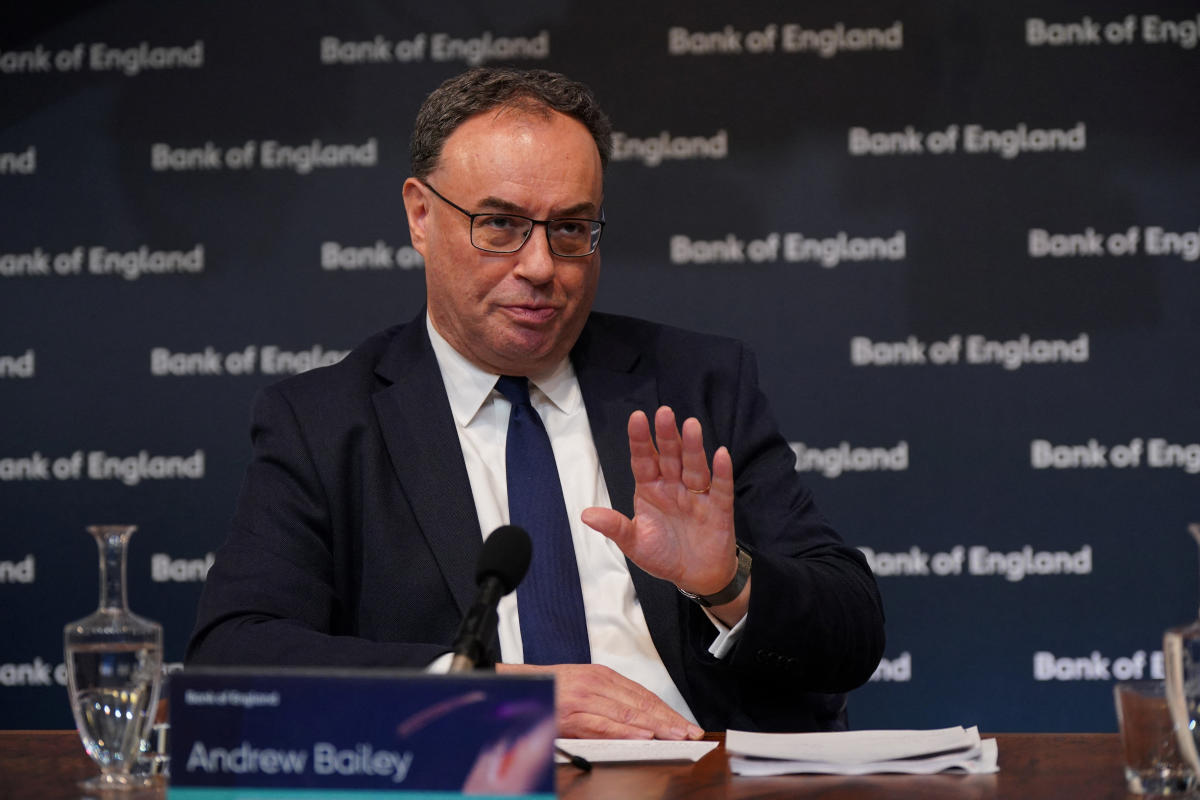The perils of a pause in rate hikes
A few developed-country central banks have already paused their policy tightening and others, notably the Federal Reserve and Bank of England, are expected to do so fairly soon.

Andrew Bailey, governor of the Bank of England, has announced yet another hike in interest rates but markets expect it to be the last. Photo: Yui Mok/Pool via Reuters
>> How will the US dollar move if the FED pauses rate hikes?
Pause signals, from the Fed in particular, could engineer a significant spike in asset prices such as bonds and stocks and a significant fall in the dollar. But the extent to which this could last depends heavily on whether central banks have done the right thing when they pause and, on this score, there are reasons for caution.
When the Fed and the Bank of England pause their rate hikes, the market will think that they are right to do so and that they won’t have to resume hikes in the future. The pauses could lead to a burst of asset price strength and dollar weakness. However, there are good reason to think that central banks might be making mistakes by pausing at rates that are no higher, or only slightly higher, than current levels.
The first, and most obvious point is that the economic environment is quite unlike anything that these policymakers will have experienced before. Inflation is much higher than any policymakers have seen and the tightness of the labour market is unparalleled. This, in itself, is a huge problem in judging whether enough policy tightening has been delivered.
However, things are even more complicated than this because the stance of monetary policy is clouded by the fact that major central banks have conducted huge quantitative easing and are sitting on large stocks of bonds as a result, even if they are in the throes of slowly reducing them. Of particular concern here is that all this quantitative easing in the past has contributed such significant additional easing that current policy rates, such as the 5% fed funds target in the US, are inconsistent with policy being set at the right level to deal with the surge in inflation.
It is not easy to calculate what all of this quantitative easing might be equivalent to in terms of the fed funds rate but those that have tried to do it have argued that the adjusted or “shadow” fed funds rate did not fall to zero but actually to -3%, or even lower, at the height of QE. If we conservatively put this QE equivalence as being 2-3% off the fed funds rate then we might argue that today’s adjusted rate is more like 2-3% and not the 5% that we see on the screens. And if you bear in mind that core PCE inflation is stuck around the 4.5% level then it still looks as if the real adjusted fed funds rate is some way below the zero line; something that might not be consistent with bringing inflation back to target.
Now, of course, we don’t doubt that this is a contentious issue. Estimates of this adjusted fed funds rate can be questioned. Others might argue that the tightening in broader financial conditions since the Fed started hiking suggests that monetary policy is not as easy as a 2-3% fed funds rate might suggest. Yet another argument is that quantitative tightening could flip things the other way and mean that the adjusted fed funds rate could rise to or above the actual rate in time.
>> Central banks’ monetary policy faces challenges
All of these objections could have some merit but bearing in mind the stickiness of inflation and the tightness of the labour market, Mr. Steve Barrow, Head of Standard Bank G10 Strategy thinks the risks are that policy right now is still far too easy, not far too tight. This, in turn, suggests that there are significant perils in announcing a rate pause now, or in the near future unless, of course, central banks like the Fed and BoE are prepared to start hiking again if the inflation outturn is not what they hope for.
“We’d like to think that central banks will be this flexible, but we fear that they won’t be, particularly when it comes to the Fed. It knows that if it has to re-start rate hikes at a later date it could actually create the sort of tightening of financial conditions globally as well as domestically that pushes policy into a place that’s far too restrictive, simply because the markets have been assuming that a pause means the end of rate hikes. In sum, we still stick to the view that big rallies in asset prices and a big fall in the dollar could come with an announced pause by the Fed. What we are not so sure about is whether it can last”, said Mr. Steve Barrow.








